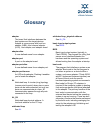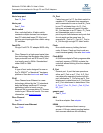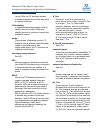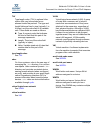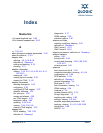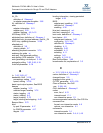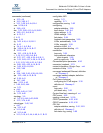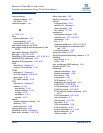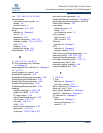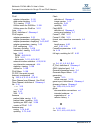
SN0054614-00 K Glossary-9
SANsurfer FC/CNA HBA CLI User’s Guide
Command Line Interface for QLogic FC and FCoE Adapters
TLV
Type-length-value (TLV) is optional infor-
mation that may be encoded as an
element inside the protocol. The type and
length fields are fixed in size (typically 1 to
4 bytes), and the value field is of variable
size. These fields are used as follows:
Type: A numeric code that indicates
the kind of field that this part of the
message represents.
Length: The size of the value field
(typically in bytes).
Value: Variable sized set of bytes that
contain data for this part of the
message.
type-length-value
See TLV.
udev
On Linux systems, udev is the new way of
managing the /dev directory. It is run from
user space. Udev creates a dynamic /dev
directory and provides consistent device
naming across reboots (when configured
as such), and provides a user space Appli-
cation Programming Interface (API) to
access information about current system
devices. udev relies on device information
available through sysfs.
virtual logical area network
See VLAN.
virtual machine
See VM.
VLAN
Virtual logical area network (LAN). A group
of hosts with a common set of require-
ments that communicate as if they were
attached to the same wire, regardless of
their physical location. Although a VLAN
has the same attributes as a physical LAN,
it allows for end stations to be grouped
together even if they are not located on the
same LAN segment. VLANs enable
network reconfiguration through software,
instead of physically relocating devices.
VM
Virtual machine. A software implementa-
tion of a machine (computer) that executes
programs like a real machine.
world wide node name
See WWNN.
world wide port name
See WWPN.
WWNN
World wide node name. Unique 64-bit
address assigned to a device.
WWPN
World wide port name. Unique 64-bit
address assigned to each port on a
device. One WWNN may contains multiple
WWPN addresses.



